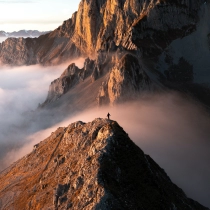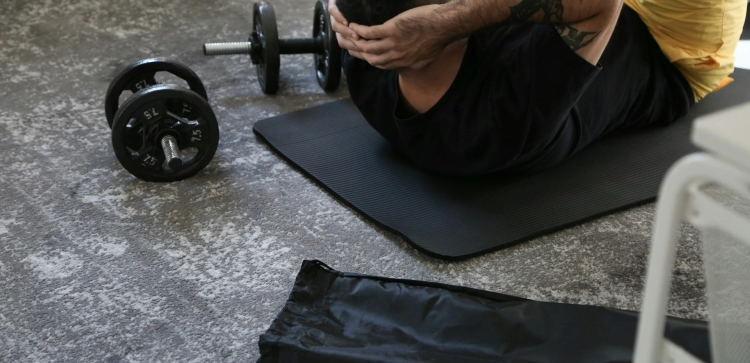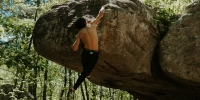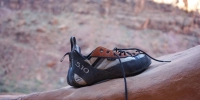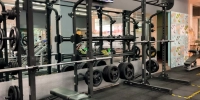Climbing Disciplines Explained: Bouldering, Sport, And Trad Climbing

The world of rock climbing is rich with diverse styles, each offering a unique set of challenges, gear requirements, and philosophical approaches. While all forms share the fundamental goal of ascending rock, the methods and mindsets employed can differ dramatically. This comprehensive guide will demystify three of the most popular and distinct climbing disciplines: Bouldering, Sport Climbing, and Traditional (Trad) Climbing. We'll explore their core principles, essential gear, safety considerations, and the unique experiences they offer, providing a clear understanding of what sets each vertical pursuit apart.
Bouldering: The Puzzle of Power and Precision
Bouldering is the most accessible and often the most intense form of climbing, focusing on short, challenging "problems" on low-height rock formations or artificial walls.
Core Principles:
-
No Ropes or Harnesses: The defining characteristic. Climbers rely solely on their physical and mental strength to complete short sequences of moves.
-
Focus on Power and Problem-Solving: Bouldering demands bursts of power, dynamic movement, and acute mental agility to decipher intricate sequences. Each problem is a physical and mental puzzle.
-
Low Heights: Problems typically range from a few feet to no more than 15-20 feet high.
Essential Gear:
-
Climbing Shoes: Specifically designed for grip and precision.
-
Chalk Bag and Chalk: To absorb sweat and enhance grip.
-
Crash Pads: Thick foam mats placed on the ground to cushion falls. Essential for outdoor bouldering; built into gym floors indoors.
Safety:
-
Primary safety relies on crash pads and spotters (individuals guiding falls to ensure safe landings on pads).
-
Falls are frequent and an inherent part of the learning and problem-solving process.
Environment & Experience:
-
Indoor: Dedicated bouldering gyms offer a controlled environment with pre-set, color-coded problems. This is the recommended starting point for beginners due to inherent safety and accessibility.
-
Outdoor: On natural rock boulders, requiring careful crash pad placement and active spotting. Offers a raw, natural experience.
-
Community: Bouldering fosters a strong communal atmosphere, with climbers often sharing "beta" (information on how to solve a problem) and cheering each other on.
Sport Climbing: The Dance of Endurance and Redpoint
Sport climbing focuses on ascending longer routes that are protected by pre-placed bolts fixed into the rock. It emphasizes physical endurance, precise movement, and pushing physical limits on established lines.
Core Principles:
-
Pre-Placed Protection: Routes are equipped with fixed bolts, eliminating the need for climbers to place their own protective gear. This allows climbers to focus purely on the physical and technical challenges of the ascent.
-
Emphasis on Endurance and Sustained Movement: Routes are typically longer than bouldering problems, requiring climbers to manage their energy and maintain sustained effort.
-
"Redpoint" Ethic: The goal is often to "redpoint" a route, meaning to climb it cleanly from bottom to top without falling or resting on the rope, after having previously practiced it.
Essential Gear:
-
Climbing Shoes: Optimized for edging and smearing on various rock types.
-
Harness: Worn around the waist and legs to connect to the rope.
-
Climbing Rope: A dynamic rope used by the climber and belayer.
-
Belay Device and Locking Carabiner: Used by the belayer to manage the rope and catch falls.
-
Quickdraws: Two carabiners connected by a sling, used to clip the rope into the bolts.
-
Chalk Bag and Chalk: For grip.
-
Helmet: Highly recommended, especially outdoors, for protection against rockfall and head impacts.
Safety:
-
Safety relies on the integrity of the fixed bolts and the competence of the belayer (the partner who manages the rope to catch falls).
-
Falls are generally safe, as the climber is protected by the rope and quickdraws clipped into bolts.
Environment & Experience:
-
Indoor: Common in gyms on tall walls, with auto-belays or partner belaying.
-
Outdoor: Found on established outdoor crags with drilled and glued-in bolts.
-
Strategy: Requires careful route reading, energy management, and often involves working a route over multiple attempts to achieve a redpoint.
-
Individualistic with Support: While the climber is focused on their personal ascent, the belayer provides crucial support and communication.
Traditional (Trad) Climbing: The Art of Self-Reliance and Adventure
Trad climbing is often considered the purest form of climbing, where climbers place all their own protection as they ascend, relying on their skill and judgment to make the route safe.
Core Principles:
-
Self-Placed Protection: As the lead climber ascends, they place removable protective devices (like cams and nuts) into natural cracks and features in the rock. These pieces are then clipped with quickdraws, and the rope runs through them. The second climber removes this gear on their ascent.
-
Emphasis on Self-Reliance and Adventure: This discipline demands a higher level of commitment, judgment, and a comprehensive understanding of gear placement, anchor building, and risk assessment.
-
"Leave No Trace": A core ethic is to leave the rock exactly as you found it, as all protection is removable.
Essential Gear (Comprehensive "Rack"):
-
Climbing Shoes, Harness, Helmet, Rope, Belay Device, Chalk Bag: All standard.
-
Rack of Protection:
-
Cams (Friends/SLCDs): Spring-loaded camming devices that expand to fit into cracks.
-
Nuts (Chocks): Metal wedges that fit into constrictions in cracks.
-
Quickdraws: Used to clip the rope to the placed protection.
-
Slings and Carabiners: Various lengths of webbing and additional carabiners for extending protection, building anchors, and managing gear.
-
-
Nut Tool: Used to extract stuck nuts.
Safety:
-
Safety is entirely dependent on the lead climber's skill in placing solid protection and the belayer's competence.
-
Falls can be longer and potentially more dangerous than in sport climbing due to the dynamic nature of gear placement.
-
Requires extensive knowledge of anchor building, rope management, and rescue techniques.
Environment & Experience:
-
Primarily an outdoor discipline, opening up a vast range of un-bolted rock formations, from crags to big walls.
-
Adventurous and Mentally Demanding: Requires significant mental fortitude, route-finding skills, and the ability to manage fear and objective hazards (e.g., loose rock, weather).
-
Deep Connection: Offers a profound sense of self-reliance and connection with the natural environment.
Comparison Chart: Bouldering vs. Sport vs. Trad Climbing
| Feature | Bouldering | Sport Climbing | Traditional (Trad) Climbing |
|---|---|---|---|
| Height | Short (typically < 20 ft) | Moderate to Long (20-100+ ft) | Moderate to Very Long (20-1000+ ft or multi-pitch) |
| Protection | Crash Pads, Spotters | Pre-placed Fixed Bolts | Climber places removable Protection (Cams, Nuts) |
| Ropes/Harness | No | Yes (for belaying) | Yes (for belaying and protection) |
| Focus | Power, Technique, Problem-Solving | Endurance, Sustained Movement, Redpoint | Self-Reliance, Risk Assessment, Gear Placement |
| Gear Required | Shoes, Chalk, Crash Pad (outdoor) | Shoes, Harness, Rope, Quickdraws, Belay Device, Chalk, Helmet | Extensive "Rack" of Passive/Active Protection + Sport Gear |
| Falls | Frequent, generally safe onto pads | Generally safe, caught by rope on bolts | Can be longer, more dynamic, higher consequence |
| Accessibility | Very High (especially indoors) | High (indoors & bolted crags) | Lower (requires extensive training & gear) |
| Environment | Indoor Gyms, Outdoor Boulders | Indoor Gyms, Outdoor Bolted Crags | Primarily Outdoor (cracks, un-bolted rock) |
| Learning Curve | Gentle entry (physical), steep for technique | Moderate | Steep (requires mentorship & dedication) |
| Philosophy | Vertical Puzzle, Intense Bursts | Physical Challenge, Efficiency, Performance | Adventure, Self-Sufficiency, Wilderness Ethic |
Conclusion
Bouldering, Sport Climbing, and Traditional Climbing, while all part of the larger climbing world, offer distinct experiences and demands. Bouldering is your entry point for intense, puzzle-like movements. Sport climbing provides a platform for pushing physical endurance on pre-secured routes. Trad climbing, with its emphasis on self-placed protection, invites a deeper engagement with the natural environment and a higher degree of self-reliance and adventure. Each discipline offers unique joys and challenges, contributing to a well-rounded and deeply rewarding climbing journey. Understanding these differences is key to choosing your path and appreciating the vast scope of the vertical world.
